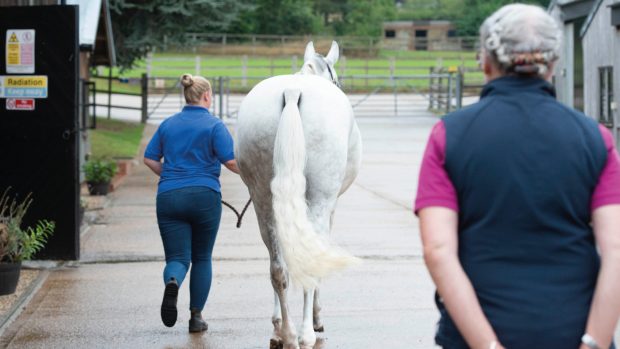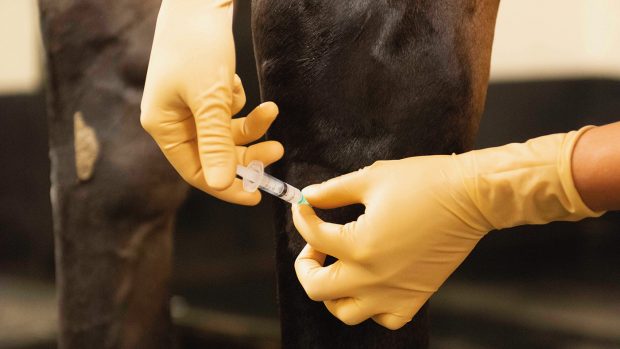While bone cysts in the horse are a relatively uncommon cause of lameness, they are being diagnosed with increasing frequency. This may be due to advances in diagnosis and standard of veterinary care, meaning that the underlying problem in lameness is being definitively diagnosed.
Bone cysts develop at the ends of bones and, in the vast majority of cases, are associated with joints. The most common site for bone cysts is in the stifle joint, although they are occasionally seen in other places, including the fetlock, shoulder and joints associated with the foot. Invariably, bone cysts occur at a site in the joint that receives maximal loading as the horse moves.
Why do bone cysts form?
There are two main reasons why bone cysts form in the horse. In youngsters, the cyst probably forms as a result of a developmental abnormality where the bone underlying the joint is not formed normally during growth and development.
Bones grow by initially producing a form of joint cartilage, which is then transformed into bone. In bone cysts in young horses, this process appears to go wrong and there is a failure of this normal transformation of bone to cartilage in a focal site at the end of the bone. This leads to an area in the end of the bone, which is right by the joint in which a cyst or hole forms, and in most case this “hole” at the end of the bone meets the joint.
The second, and probably most common, form of bone cyst occurs in the older horse and is almost certainly a result of an earlier traumatic injury such as a joint sprain.
What appears to happen in certain joints — if there is any marked damage to the cartilage and the area of bone that directly underlies it — is that the body sets up a reaction that leads to the horse naturally dissolving the bone underlying the injury site, ending in the formation of the cyst. Again, the majority of these older traumatic forms of bone cyst communicate with the joint.
Why this occurs is unknown, and why the problem only occurs at very specific locations within the body is also unclear. This type of injury is relatively unique to the horse and similar injuries are rarely seen in man or other animals.
SUBSCRIBE TO HORSE & HOUND AND SAVE Enjoy all the latest equestrian news and competition reports delivered straight to your door every week. To subscribe for just £1.43 a copy click here >>
|




